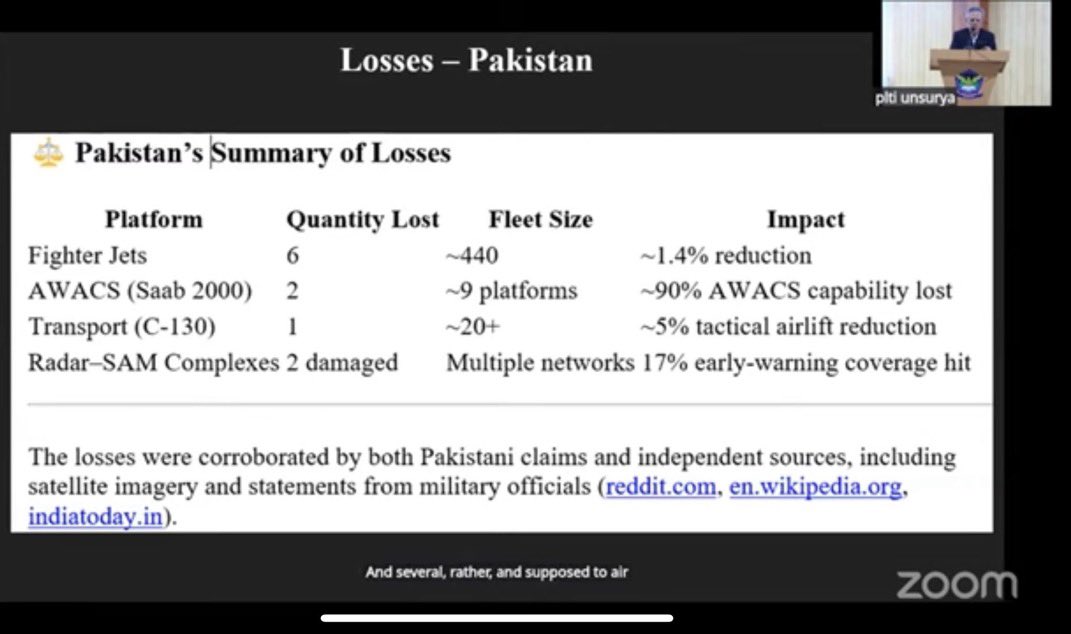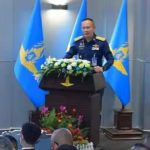The Indonesian Air Force recently organized two in-depth seminars at its Air Force University, focusing on the May 2025 India-Pakistan aerial conflict and its strategic implications. Titled “International Seminar: Analysis of the Pakistan–India Air Battle and Indonesia’s Anticipatory Strategies from the Perspective of Air Power,” the sessions offered detailed insights into the short yet impactful air war that erupted between the two nations earlier this year.
The seminars examined operational details and strategic lessons from the conflict. Presenters outlined the extent of damage sustained by the Pakistan Air Force (PAF), supported by slides and analysis. According to the data presented, the Indian Air Force (IAF) successfully targeted and destroyed six Pakistani fighter jets, two Saab-2000 Erieye airborne warning aircraft, and one C-130 transport aircraft. Additional damage to key airbases was also highlighted, reinforcing the view that India gained the upper hand in the aerial domain.
Official Indian representation at the seminar was provided by Captain Shiv Kumar, Defence Attaché at the Indian Embassy in Jakarta. He participated in discussions on air power and defense strategy, offering India’s perspective on the conflict. The Pakistani Defence Attaché, however, declined to participate, objecting to the inclusion of satellite imagery showing damage to Pakistani military installations in the event’s official brochure and presentation materials.
The decision to study the India-Pakistan air battle in an academic and defense setting reflects Indonesia’s growing interest in air power trends and its own need for anticipatory strategies. The focus extended beyond South Asia, touching on the importance of early warning systems and the evolving role of drones, surveillance platforms, and regional partnerships.
The outcome of the seminar indicated a shift in the perceived balance of air power in South Asia, particularly with the reported loss of Pakistan’s airborne early warning assets. These losses were seen as weakening the country’s real-time situational awareness and broader air defense capabilities. Analysts at the event discussed the implications of such setbacks for Pakistan and the need for enhanced resilience in future aerial engagements.
The Indonesian initiative also prompted wider discussion on the difficulty of maintaining neutrality in international defense forums, especially when operational data from ongoing or recent conflicts is involved. Still, the sessions were noted for their analytical depth and relevance to air force modernization efforts across Southeast Asia.
As air power continues to play a central role in regional security, the Indonesian Air Force’s engagement with this topic signals an intention to remain informed and prepared amid a changing geopolitical environment.













